The post Groups Announce Successful Test to Advance Fusion Energy appeared first on POWER Magazine.
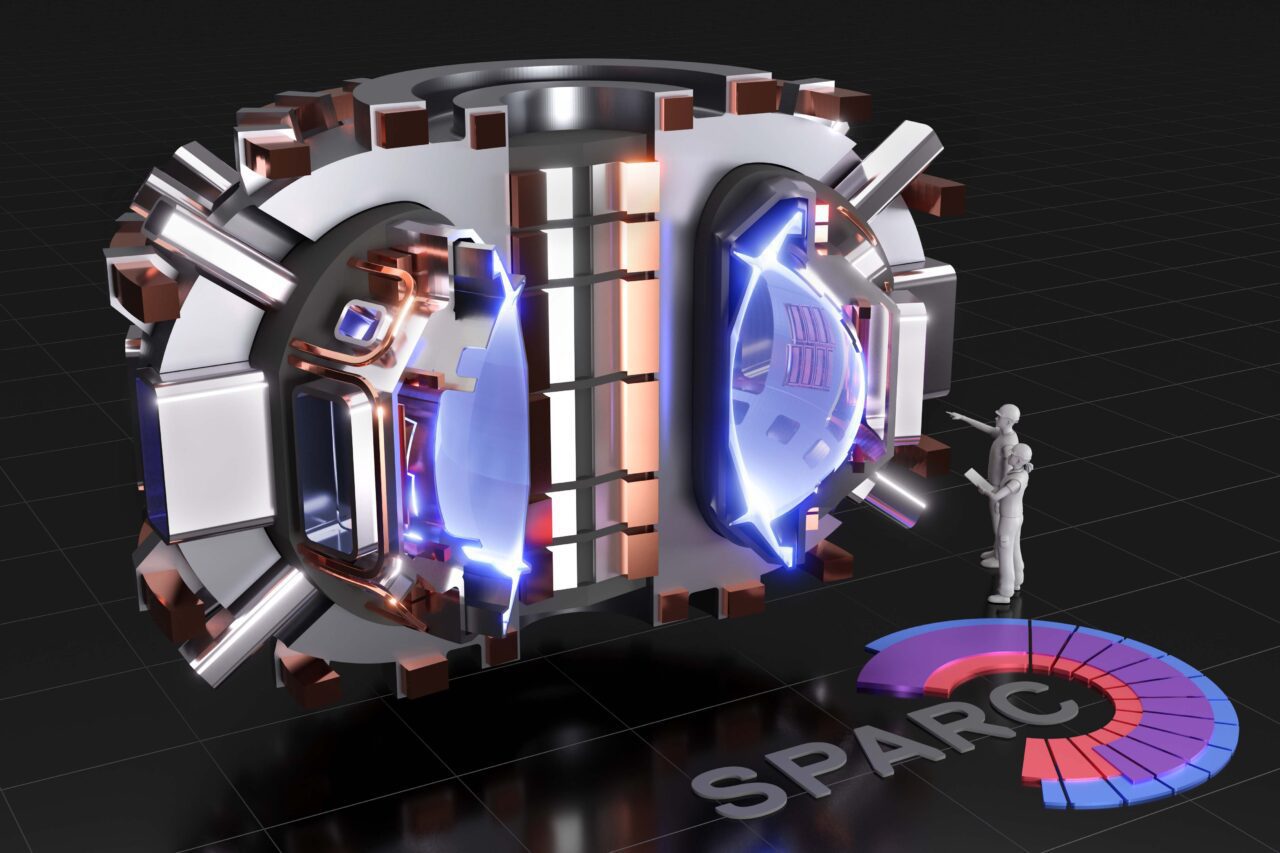
A company working to bring fusion energy technology to market joined with a group from the Massachusetts Institute of Technology (MIT) in announcing a successful test of what they call the world’s strongest high-temperature superconducting (HTS) magnet, technology considered key for development of commercial fusion energy.
Representatives of Commonwealth Fusion Systems (CFS), along with researchers from MIT’s Plasma Science and Fusion Center (PSFC), on Sept. 8 outlined the group’s progress in developing the HTS, what they called a “world changing” technology to produce power while also combating climate change.
The milestone test, conducted at the PSFC on Sept. 5, proved that the magnet built at scale can reach a sustained magnetic field of more than 20 tesla. That’s enough to enable CFS’s small tokamak device, called SPARC, to achieve net energy from fusion, what the groups called “a historic first.” They said the successful demonstration proves that the SPARC will be the world’s first fusion device that can create and confine a plasma that produces more energy than it consumes.
‘Clear Path to Fusion Power’
“This record-breaking magnet is the culmination of the last three years of work and will give the world a clear path to fusion power for the first time,” said Bob Mumgaard, CEO of CFS, who has previously talked with POWER about his group’s work. “The world needs a fundamentally new technology that will support efforts to decarbonize on a timeline that can mitigate climate change. This test of our magnet proves we have that technology, and we’re on our way to producing clean, limitless energy for the entire world.”
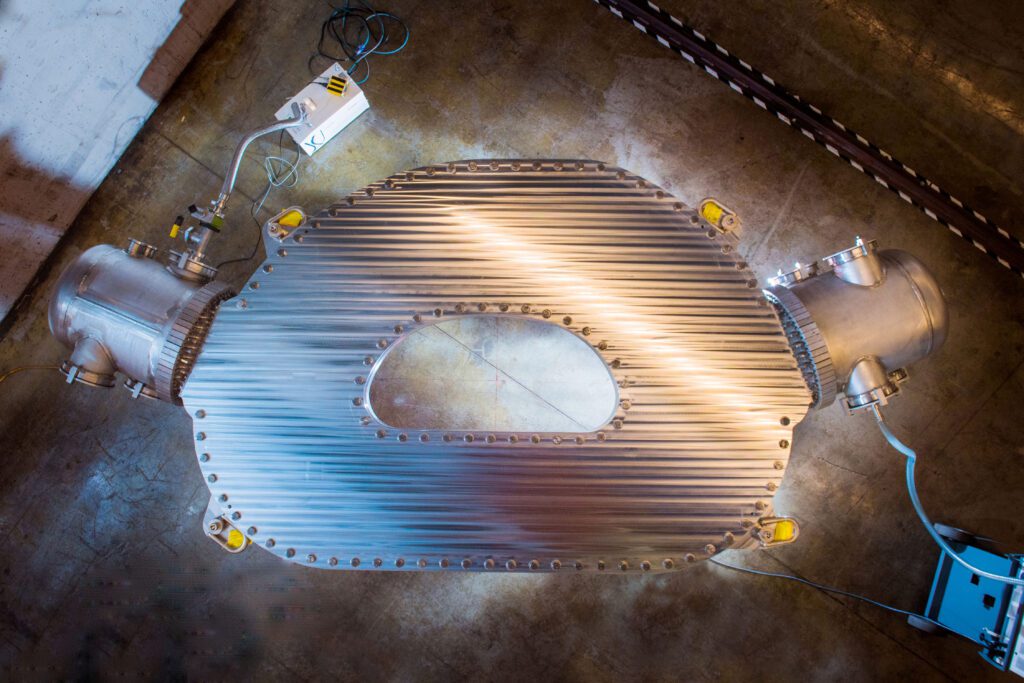
CFS and MIT’s PSFC used new commercially available high temperature superconductors to build the magnets that will enable significantly stronger magnetic fields in a tokamak, a donut-shaped device that use magnets to control and insulate a plasma in which fusion occurs. The officials on Wednesday noted that while no fusion device has yet to achieve net energy from fusion, tokamaks have come the closest with more than 160 tokamaks built and successfully operated around the world. Tokamaks previously used low-temperature superconducting magnets, which required them to be large enough in size to create the magnetic field needed to attempt to achieve net energy.
While existing tokamaks rely on device scale to attempt net energy, HTS magnets enable a high-field approach that will enable CFS to reach net energy from fusion with a device that is substantially smaller, lower cost, and on a faster timeline.
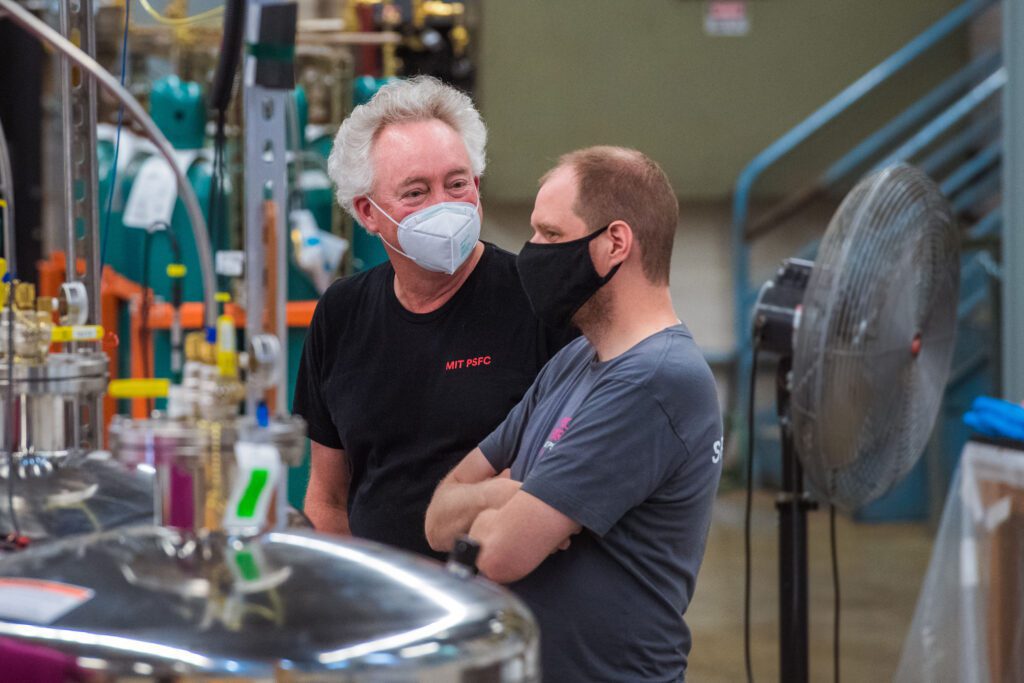
In this most recent test, the magnet was gradually powered up in a series of steps until reaching the goal of a 20 tesla magnetic field, which is the highest field strength ever for a high-temperature superconducting fusion magnet. The magnet is comprised of 16 plates stacked together—each plate by itself would be the most powerful high-temperature superconducting magnet in the world.
Mumgaard in a media briefing Wednesday said, “We set out an audacious goal, to commercialize fusion energy as quickly as possible. Our first step was a key revolutionary technology, to create this magnet, and now with all the parameters we need, the next step is to create SPARC. We are working to create fusion energy on a very fast timeline, on a commercial scale.”
Eni, an Italian energy group and investor in CFS, lauded the achievement, in large part for its potential to combat climate change. “For Eni, magnetic confinement fusion holds a pivotal role in the technological research for decarbonization, as it will [allow] humanity to access large quantities of energy produced,” said Eni CEO Claudio Descalzi. Eni is known for its strategies designed to reduce carbon footprints and support production of clean energy.
Stronger Magnetic Fields
Mumgaard said the CFS HTS magnets will enable significantly stronger magnetic fields, and as a result much smaller tokamaks. He and the others who spoke Wednesday highlighted the significance of achieving net energy from fusion, saying fusion power plants will have advantages over traditional power plants because with fusion they will be carbon-free, dispatchable, have a limitless fuel supply, and are safer than other types of plants.
This HTS magnet technology will be used in the SPARC project, which is being built in Devens, Massachusetts, with a goal of being able to demonstrate net energy from fusion by 2025. Mumgaard said SPARC is a smaller version of the group calls ARC, which would be the first commercially viable fusion power plant. Said Mumgaard: “This is the fastest path to commercialization of affordable fusion energy across the globe.”
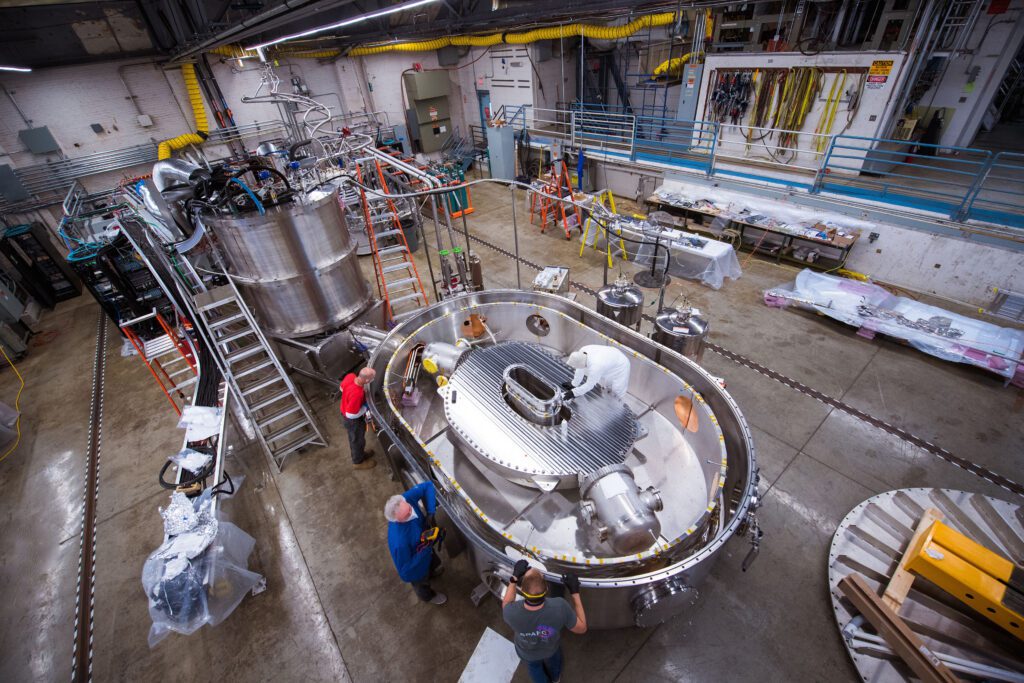
Maria Zuber, vice president for research at MIT, said, “With the successful test of the magnet, the teams have shown we can get net positive energy from a fusion device. This magnet is at the center of the team’s strategy to develop fusion power plants and deliver reliable energy to the grid. To reach net-zero emissions later this century, we will need new tools and new technology. This test shows that in the not-too-distant future, we could have a technology to help fight climate change.”
Zuber continued: “Fusion in a lot of ways is the ultimate clean energy source. The amount of power that is available is really game-changing.” Zuber noted that fhe fuel used to create fusion energy comes from water, and said “the Earth is full of water—it’s a nearly unlimited resource. We just have to figure out how to utilize it.”
‘Change the Trajectory’ of Global Energy
The researchers on Wednesday said developing the new magnet has been considered as the greatest technological hurdle to moving fusion toward commercialization. They said the magnet’s successful operation now opens the door to that goal, something scientists have chased for years.
“This magnet will change the trajectory of the world’s energy landscape,” said Dennis Whyte, director of the PSFC. “With this unique collaboration between MIT and CFS, we deliberately made choices [to speed development]. This magnet is the epitome of technology, a hallmark of MIT. It brings together the best talent across a multitude of disciplines.”
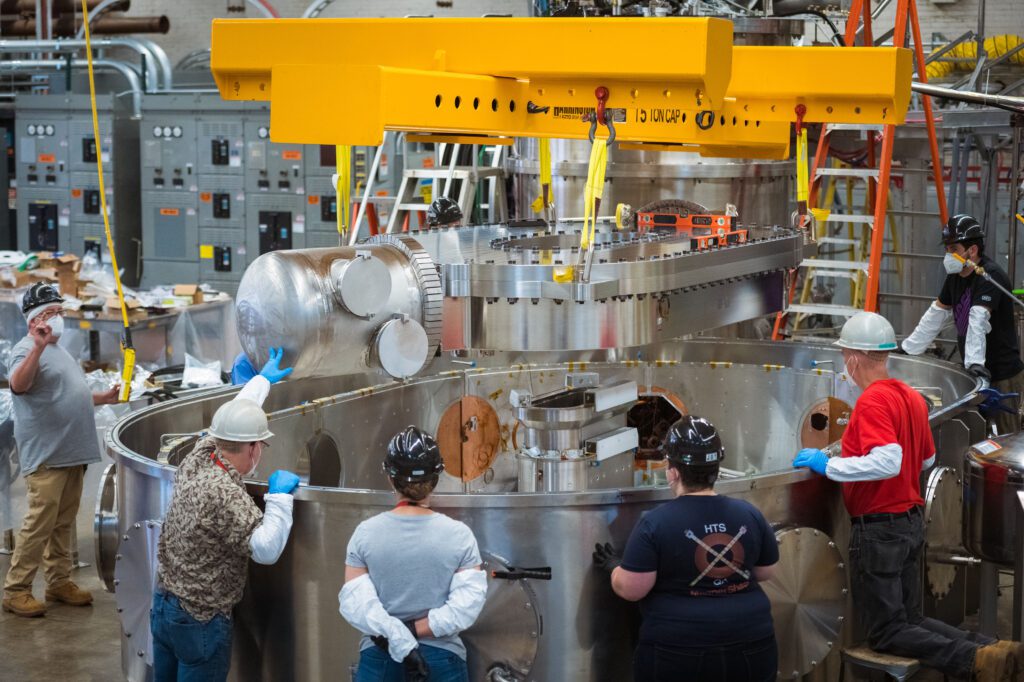
Whyte, noting the excitement among the groups about the milestone, said “We proved that we can achieve something really extraordinary. Can fusion energy be [developed] in time to make a difference in climate change? We’re on the brink of harnessing that.”
CFS is a company that was spun out of MIT. The officials several times on Wednesday noted that the collaboration enables a “more nimble approach” to technology development, as Mumgaard’s group combines the decades of research experience of the PSFC with the innovation and speed of the private sector.
“This groundbreaking magnet opens a widely identified transformational and accelerated opportunity for advancing fusion science and commercial fusion energy,” said Whyte. “It’s the tide that lifts all boats. The key economic part was to be able to make much smaller fusion power plant designs … there are still some technical challenges to go, but we have a pathway now to move forward on a much faster timescale, to bring fusion to market faster, and more economically as well.”
Development and Prototypes
The researchers in Wednesday’s briefing noted the technical nature of their work could make it difficult for many people to understand its significance. Fundamentally, fusion is the process that powers the sun; it’s the merger of two small atoms to make a larger one, releasing enormous amounts of energy.
The process, though, requires temperatures well beyond the realm of what any solid material could withstand. So what’s needed is a way to capture, and contain, something at temperatures of 100 million degrees or more, and as the researchers noted, doing it in a way that prevents contact with anything solid.
“We built a first-of-a-kind, superconducting magnet. It required a lot of work to create unique manufacturing processes and equipment. As a result, we are now well-prepared to ramp-up for SPARC production,” said Joy Dunn, head of operations at CFS. “We started with a physics model and a CAD design, and worked through lots of development and prototypes to turn a design on paper into this actual physical magnet.”

That process has entailed construction of manufacturing capabilities and testing facilities, and working with multiple suppliers of superconducting tape, to enable the ability to produce material meeting the needed specifications. In this case, the researchers said the major innovation in the MIT-CFS fusion design is the use of high-temperature superconductors, which enable a much stronger magnetic field in a smaller space. The new high-temperature superconductor material—a flat, ribbon-like tape—makes it possible to achieve a higher magnetic field in a smaller device. Mumgaard said it can equal the performance that would be achieved in a something “40 times bigger than the machine we are building,” referring to the ITER project in France.
“The ITER project uses magnets,” Mumgaard said, but its massive size in part is why “they don’t plan to produce net energy in that machine until 2036. But by being 40 times smaller than that machine, we can put this nimbly together by 2025.”
Zuber said the project “was designed to commercial. This was not designed to be a science experiment. It uses decades of fundamental research in terms of tokomaks. SPARC, and then the next stage, ARC, which would be the power plant, is designed to operate commercially, with simplicity, and [while] minimizing cost.”
Mumgaard concurred. The successful test is “a big moment,” he said. “We now have a platform that is both scientifically very well-advanced, because of the decades of research on these machines, and also commercially very interesting. What it does is allow us to build devices faster, smaller, and at less cost.
“The technology is modular and can be built quickly, all aimed toward getting toward commercial systems as fast as possible, maybe by 2030,” Mumgaard said. “A smaller fusion machine, based on all the great science being done around the world.”
The post Groups Announce Successful Test to Advance Fusion Energy appeared first on POWER Magazine.